5 Things That Make People Click On Content
59% of the people who share your content will never even look at it. They'll never actually click through. See how to change that with these proven tricks.

Oct 11 2017●9 min read

- How to publish the content that does get clicked
- 1. Your content promotions tug – or don’t tug – at your audience’s emotions.
- 2. Your content is visual.
- 3. Your audience knows, likes and trusts your brand.
- 4. Your headline, brand, and image telegraph what’s in it for your audience.
- 5. Your content has the right color.
- Closing Thoughts
In digital marketing, all metrics are not created equal. And it’s really easy to get focused on the flashier metrics – like shares – and then discount other measurements.
Speaking of shares – they’re a good example. They look like they mean a lot at first, but do all those shares amount to anything? Do they actually translate into clicks and sales?
Sometimes yes, sometimes no. But more often no than yes.
One of the dirty little secrets of social media is that most of the people who share your content aren’t reading it. That sounds a little counterintuitive at first… I mean, who would reshare a social media post if they hadn’t even clicked through to look at the content? And yet, people (um… maybe even you, if only once or twice) do it all the time.
Research has shown that 59% of online users do not click on the links to the articles they share.
In other words, your loyal, wonderful followers and friends on social media are forwarding and sharing your content… but not actually looking at it.
They’re retweeting, reposting, regramming away… without ever clicking through.
Now, is this lazy? Sure. Surprising? Yes. But not quite so surprising when you think about the focus most of us have when we’re zooming through our social media feeds. Even a quick visit to Facebook will deluge you with hundreds of posts and updates and messages. Twitter and Instagram are even worse. Even LinkedIn shows me way more content than I could ever click, much less even read, in one day.
We all know this. It’s one of the biggest issues in content marketing: Content shock. There’s just WAY more content than anyone could ever even hope to get to, even if consuming content was all you did all day, and you kept yourself to just one little niche. Some people rely on variety of digital marketing tools to help them get a grasp on their content strategy.
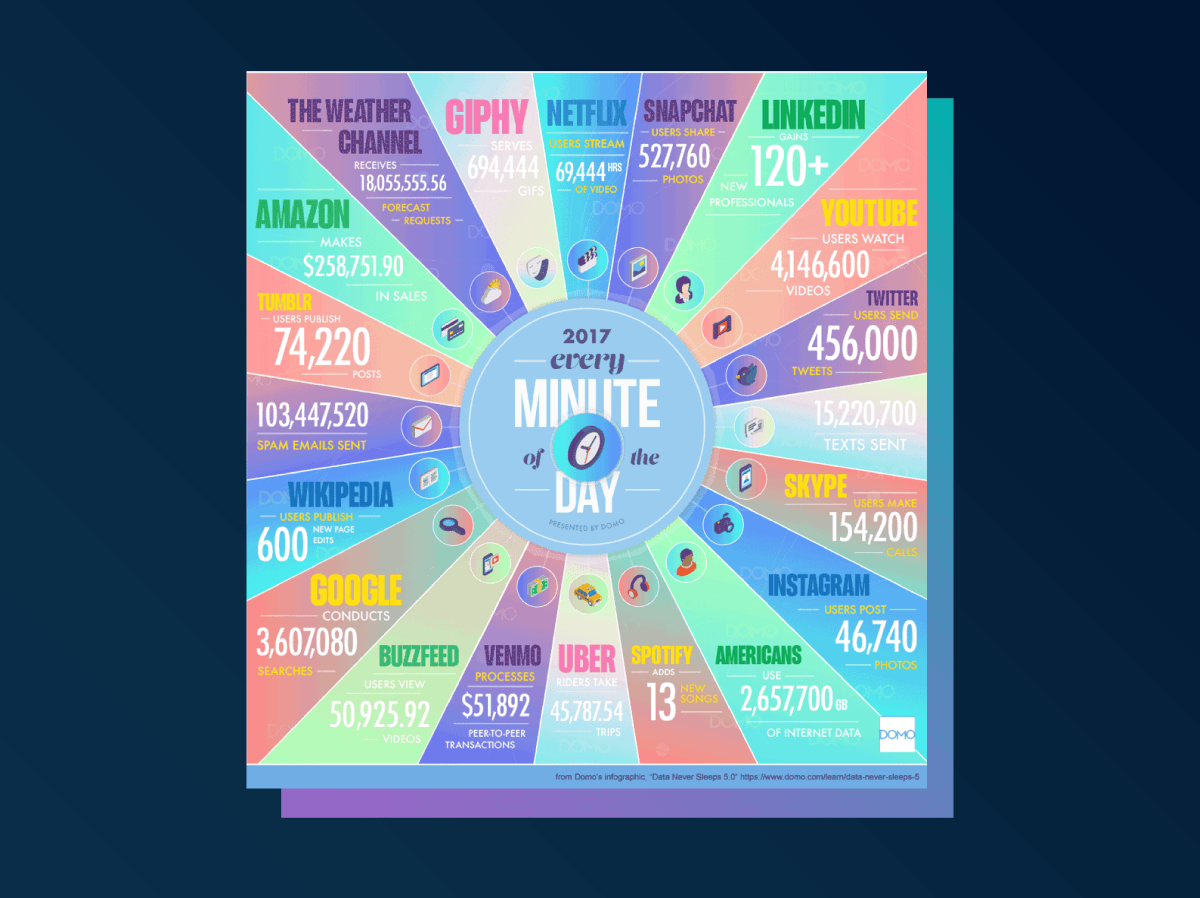
So if you’ve been sharing content without reading it, we forgive you. Heck, we forgive us, too. We forgive everybody for seeing what looks like a good article, and clicking that share button without clicking through, and without really even thinking about it.
Don’t worry, we won’t tell. And if you haven’t – congratulations. You’re less likely to share something that could get you into trouble. Some fine influencer reputations have been destroyed by resharing content they didn’t scrutinize closely enough.
How to publish the content that does get clicked
But now that you know this secret about online sharing behavior… wouldn’t you like to be the exception.?To have your content be the exception? Because if we could get even 20% more of the people sharing and seeing our content to actually click through, that would mean big things for our businesses.
More clicks would translate into more people signing up for your email list. Or more people learning more about your company. Or maybe even some of those clickers converting all the way into requesting a demo, or starting a free trial. Or becoming full-on, real-deal paid customers.
It could happen. Especially if you’re optimizing your website. But first, you have to get these people to click through. So here are five easy, proven ways to get more clicks. You’ve already got the eyeballs, after all. You just need to get people to twitch thier finger and take a chance on what they’ll find when they click through.
1. Your content promotions tug – or don’t tug – at your audience’s emotions.
Want people to click on your content? Slap a cat on it.
Or even better – slap a kitten and a puppy on it.

Okay, okay – just kidding. But why does the cat thing work so ridiculously well online? Why is it that if you were just skimming through this article before, that you stopped to take in that furry cuteness?
It’s because cuteness elicits an emotional response. And emotional responses get people to click.
The “awww” factor of cuteness aside, emotion shows up all over the place online. The Advanced Marketing Institute even has an “Emotional Marketing Value Headline Analyzer” that will analyze how strong an emotional pull your headlines evoke. It works for blog posts and for social media posts, too.
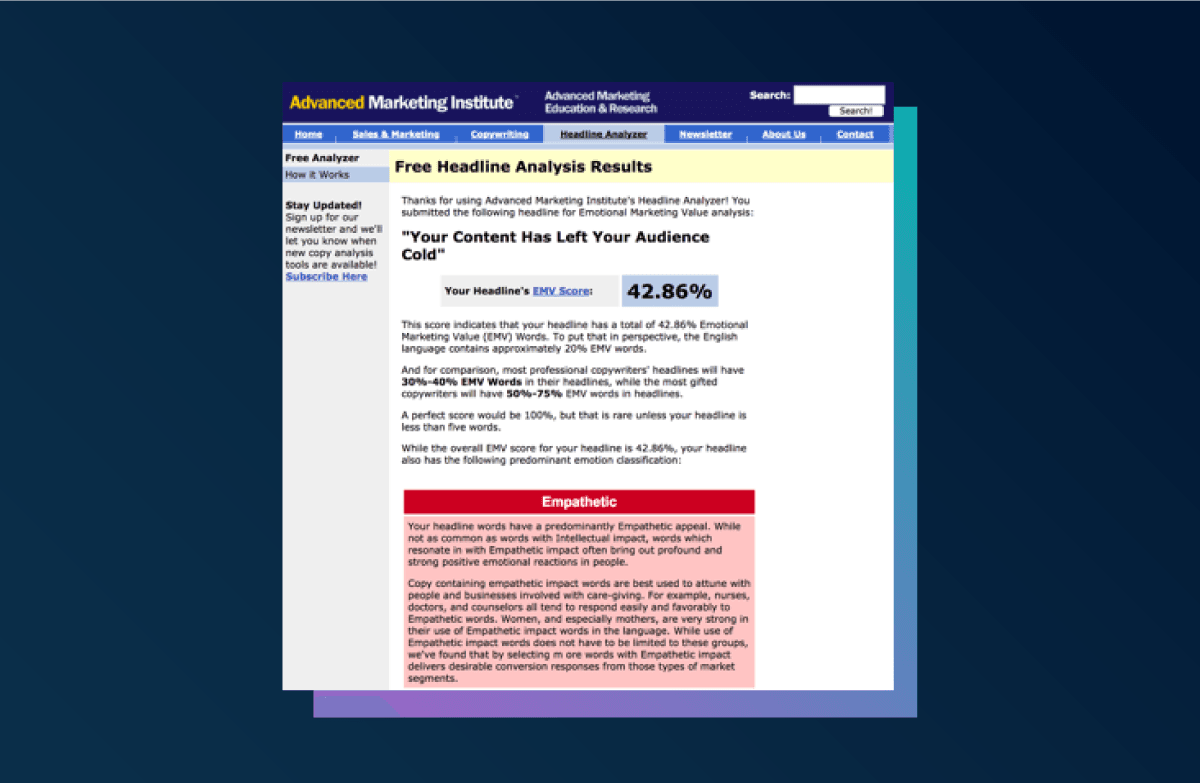
This tool and a lot of other research maintains that it is emotion, first, last and always, that gets people to act.
Many experts point out this happens both in B2C and B2B markets. B2B buyers may want to be more rational and analytical, but the truth is, they’re still human. Even the most data-wonky B2B buyer is a human first, and they will tend to make fast, emotion-based assessments of things… and then they’ll scrounge for data and facts to back up that emotional response.
So all you need to do – both to get people to click on a social media post, or even to click on a call to action – is to evoke an emotional response. In other words, you gotta make your audience feel. AI can do a better job in writing headlines that have emotional touch and more enticing that people are more likely to click on.
2. Your content is visual.
“A picture is worth a thousand words.” Cliché perhaps, but this applies in spades if you want to get people to click. Especially on social media.
Case in point: Tweets with images get 35% more retweets, and articles with images get 94% more views.
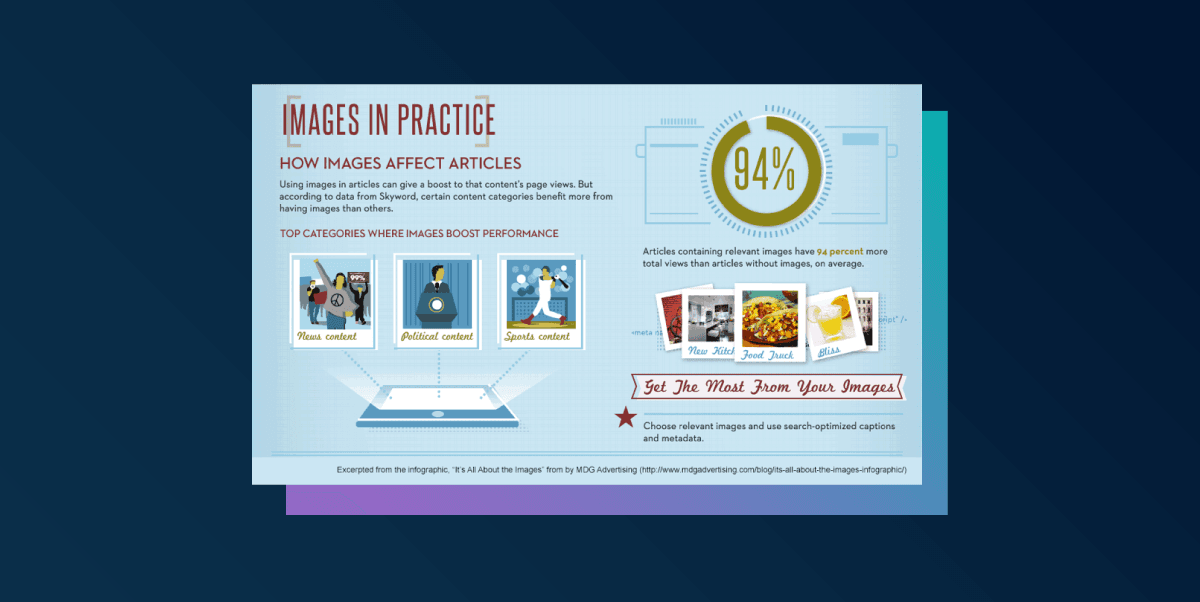
Of course, just dropping any old image in will probably not help all too much. It’s the right image that really gets more clicks.
So what is the right image? It depends on your audience and your content, but the right image is usually not a stock photo.
People have become so good at screening out ads, they’ll often be able to recognize a glitzy stock photo in one glance – and they’ll ignore it. But use a photo of an actual person, and you’re more likely to get the click.
3. Your audience knows, likes and trusts your brand.
We don’t talk about it much, but our content has a reputation (a brand, if you will) just as much as our company or our services do. People judge our new content based on their experience or lack of experience with our old content.
For example: If you’ve been publishing poor content for a while, your audience may have clicked through once or twice to look at something you’ve published. But then they were disappointed by what they found.
The next time they see a piece of content from your company, they’re less likely to click through. They’re tried your content before… and it was a disappointment. So why waste any more time with it, especially when they’ve got 300 other enticing pieces of content to read, watch or listen to? Remember: Your content can’t just be “good” anymore. It has to be so good that someone will give up what they’re doing to pay attention to it.
Not sure about this “content brand” idea? Look to email marketing, where the average email click-through rate stands at 1.89%, to see concrete evidence of this “brand reputation” your content has.
An email’s sender name is the most prominent thing about an email in the inbox view when you’re on a mobile device. And changing sender name influences email open rates by A LOT.
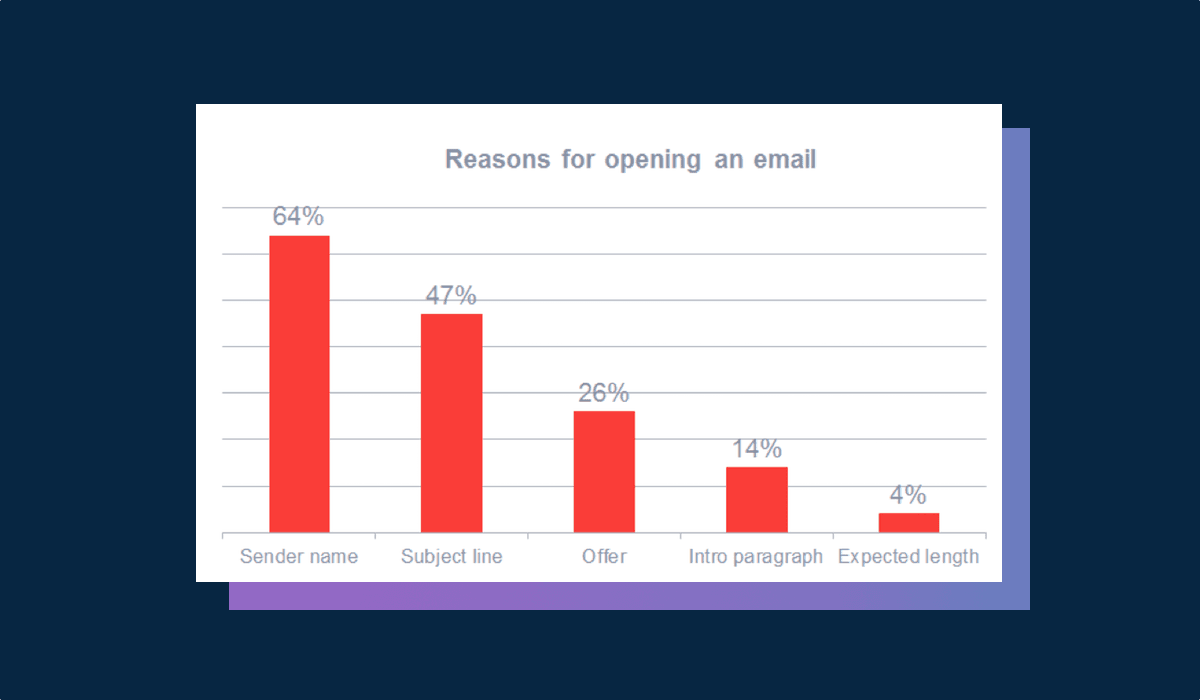
The power of the sender name, and this idea of a content brand actually makes sense offline, too.
When you get a phone call, what’s the first thing you want to know – the one thing that almost certainly decides whether you answer the phone or not? It’s who it is. Who a message is from radically affects whether we pay attention to it or not.
4. Your headline, brand, and image telegraph what’s in it for your audience.
Ever heard the acronym “WIIFM”?
It stands for “what’s in it for me?”
While that question might seem a whiff self-centered, it’s actually a conscious filter through which we screen everything online.
We do not click on anything that does not immediately telegraph what’s in it for us.
Telegraph is the operative word here, too. When people are streaking through their social media feeds, their inbox, the headlines on a website, if your content’s general message does not immediately convey “what’s it in for me”, forget it. Your potential clicker is already gone.
The reality is, we’ve all got less than a second to convey WIIFM and convince our potential clickers we can deliver on that promise. And if there’s any hesitation – even a whiff of uncertainty – bang: your potential clicker has moved on.
Want to master the art of WIIFM? Study Buzzfeed. Their entire business model is basically built around optimizing their content to attract clicks.
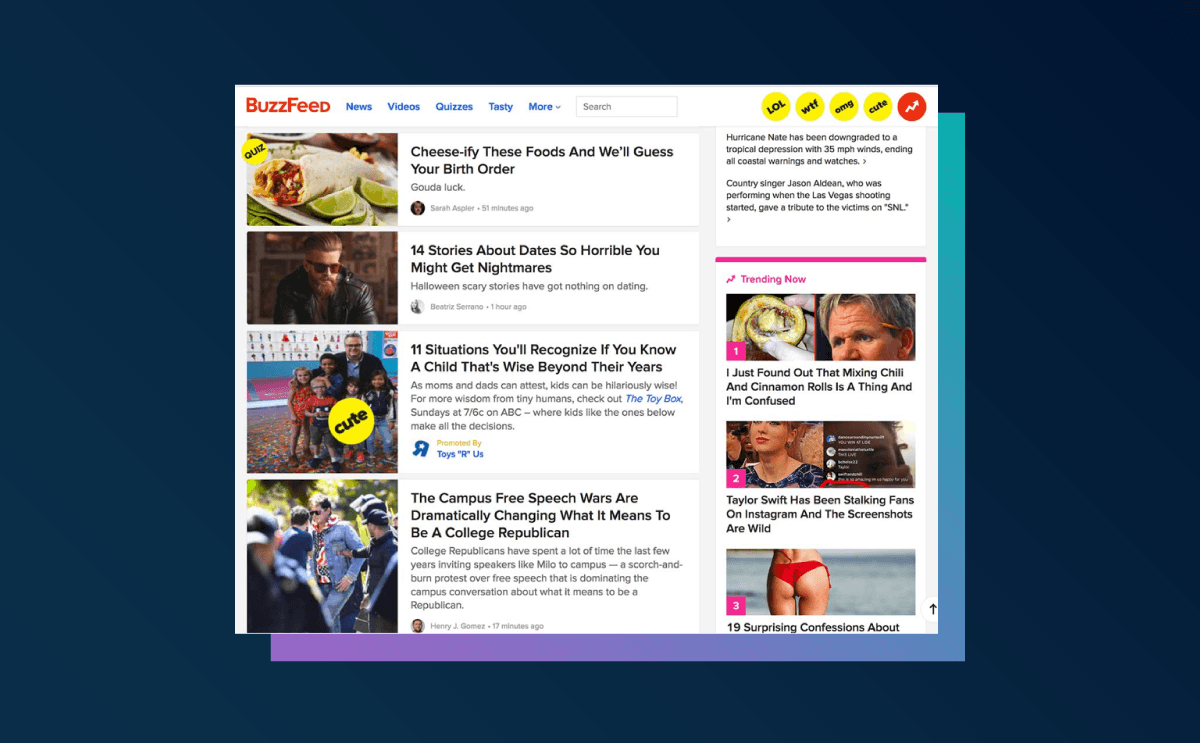
5. Your content has the right color.
Yup – color can affect whether we click or not. According to the Institute for Color Research, when people make their preliminary judgments about things, “62 percent and 90 percent of that assessment is based on color alone”.
So what’s the best color? For links, it’s blue. That’s actually not too surprising, given that the default, go-to color for unclicked links across the web is blue.
Way back in the 1990’s, when web design was still figuring out its conventions, some sites tested different link colors like orange or green… but everybody eventually decided on blue after widespread testing. Google then re-examined that assumption when they tested 41 different shades of blue. It seems just any blue won’t do.
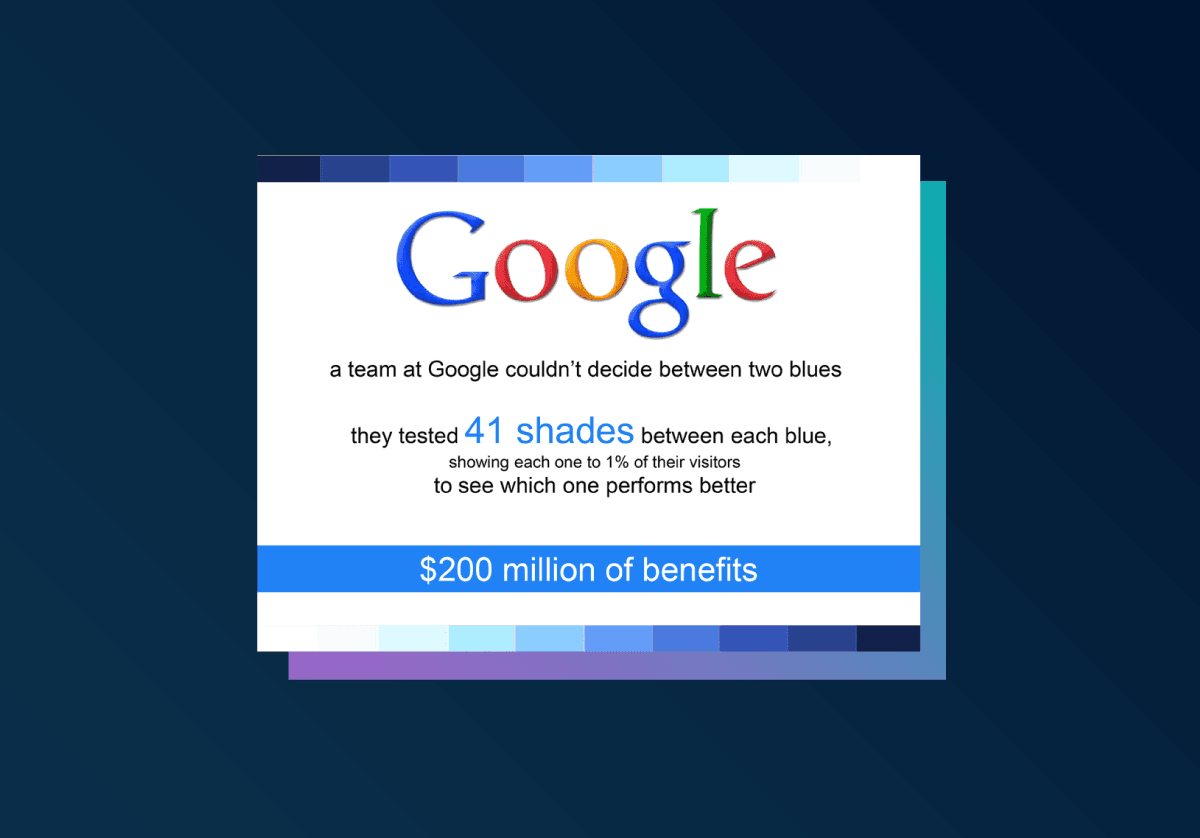
Closing Thoughts
We’d love to tell you that if you just followed these suggestions, you’d double your click-through rate for every platform you promote content on.
But unfortunately, it isn’t true.
Your audience is going to respond differently than the general population – and it’s definitely going to respond differently than the audiences in the split-tests mentioned here.
So while these are all good suggestions, they aren’t specific to your content and your audience. The only way to really know what works best for your content and your audience is to track and test for yourself.
You need a reliable, easy-to-use analytics platform in place, and you need to get a baseline for how your audience engages (or doesn’t engage) with your content. Then start testing.
The easier your reporting is to understand and share, the more insights you and your team will be able to glean from it. This screenshot is from a sample Whatagraph SEO report.
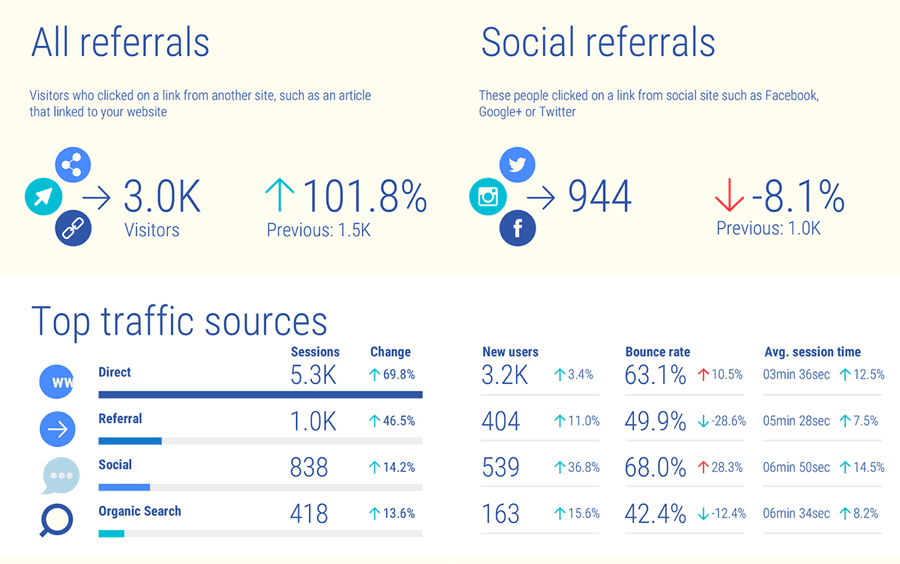
Who knows – maybe your social media manager will discover images that are mostly blue do get the best clicks after all. Or maybe your copywriter will really hone in on WIIFM while they write headlines and content descriptions… but maybe they’ll find out there are certain phrases or mindsets that are particularly clickable for your followers.
You’ll never know until you’ve got testing and tracking set up - and set up in a way that’s easy to use. Because if it isn’t easy to use… you probably won’t use it. Just like your audience won’t click if they think they aren’t going to find something great pop up on the next screen.

WRITTEN BY
Pam NeelyPam is an award-winning freelance content writer with expertise in SaaS, MarTech, and small business marketing companies. A business book ghostwriter in her free time, Pam always writes from a B2B owner perspective.